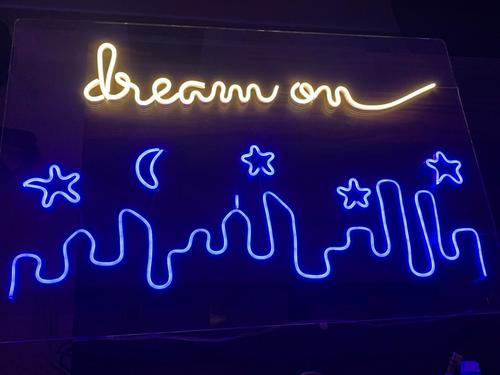The history of the neon sign
Light means life. You don’t like to be where it’s dark, except maybe to sleep. But light beckons. For many years, neon advertising has also been bringing light into cities at night, providing orientation and transforming cities into spaces that are also lived in at night.
Sketch and Etch who trade, sell something and want to attract customers have always tried to advertise. Be it in a very simple way as a barker or through information leaflets – people try to draw attention to your goods. A wide variety of advertising media have therefore developed, especially in cities. For a long time, advertising pillars, for example, were considered to be one of the most important advertising spaces in urban areas. In addition, so-called nose shields shaped the facades of shops and restaurants. “Nose” because they protruded from the wall of the house and protruded into the air. The typical brass pretzels at traditional bakeries or the boots in front of a cobbler still seem familiar to most of us, at least from films. Outdoor advertising experienced a revolution with the introduction of neon advertising.
Various sources argue about when and where the first neon sign was installed.. The first illuminated advertising systems did not yet shine in bright neon colors, but consisted of conventional lightbulbs, but that was a big change for the time and often involved a lot of effort. Thousands of small lightbulbs and many kilometers of connecting cables were built in to with neon advertising to advertise. However, the development of neon advertising was slowed down again and again. During the First World War it was banned for reasons of energy policy. In the following Roaring Twenties it experienced a renewed upswing,

The breakthrough of the neon sign
With the end of the Second World War and the economic miracle in the 50s, neon signs left their dark days behind and experienced a breakthrough.. Colorful neon lettering in bright, strong colors stood for the spirit of optimism that overwhelmed people after years of war and deprivation. Illuminated advertising celebrated life and invited people to restaurants, cinemas and shops. It also entered the neon advertising business during this important phase. Since then, the industry has been constantly changing, but hardly anyone thinks of a ban on this formative element of modern cities.
Neon sign in the future
Today there is almost nothing in advertising that does not exist. Large light panels are digitally controlled, change their design every minute, SMS campaigns send advertising directly to private cell phones and we receive advertising suggestions in social networks that are based on our personal buying behavior. Despite all these developments, nobody is taking down their neon signs. Attractive outdoor advertising remains an essential part of a good advertising strategy. And with the right design and the right light, neon advertising will continue to attract people in the future and bring life to cities.


